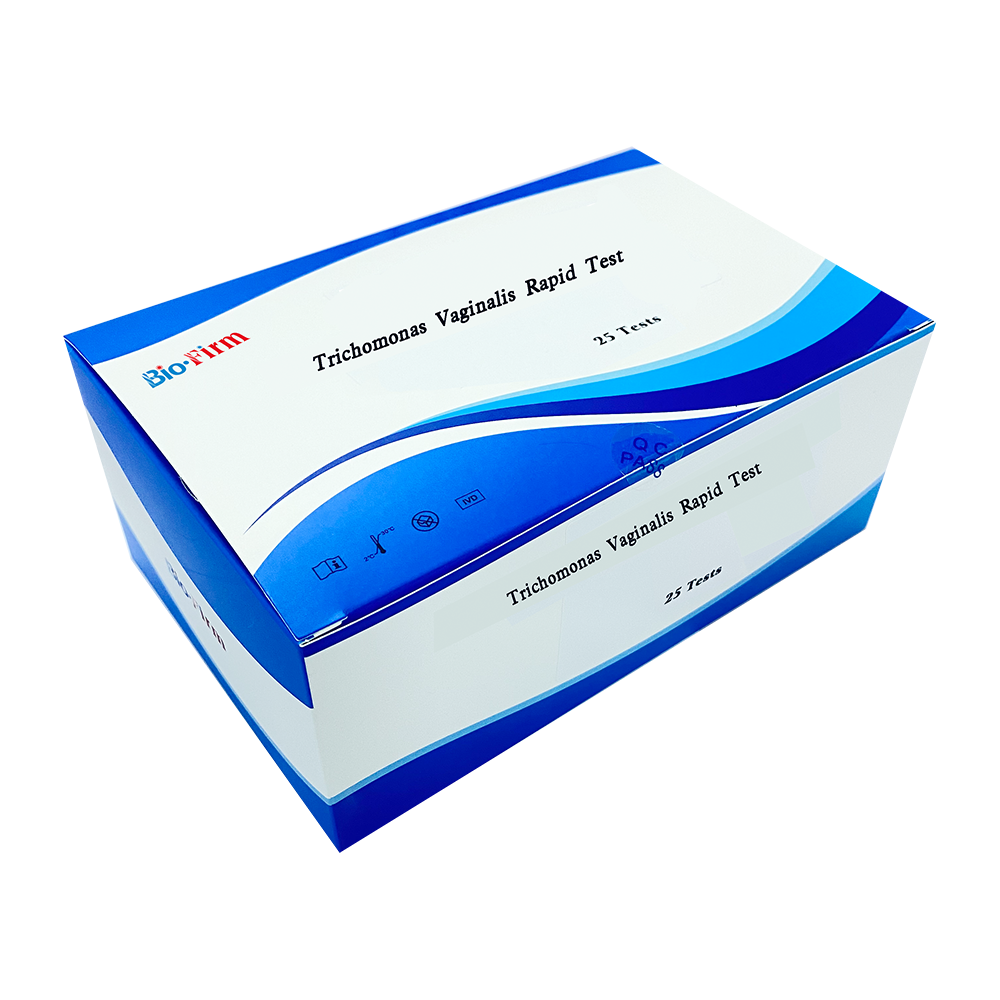Jul 01,2022
The results of Trichomonas vaginalis rapid tests can play a crucial role in informing treatment decisions by providing timely and accurate diagnoses that guide clinicians in prescribing the appropriate therapy. Here's how these results can be effectively used:
1. Immediate Diagnosis and Treatment Initiation
Positive Result: A positive rapid test for Trichomonas vaginalis typically indicates an active infection. This allows healthcare providers to initiate treatment immediately without waiting for more time-consuming laboratory confirmation. The most common treatment for Trichomonas vaginalis is metronidazole or tinidazole, which are antiprotozoal medications.
Negative Result: A negative result suggests the absence of a Trichomonas infection at the time of testing, which can help rule out the infection and prevent unnecessary treatment. However, healthcare providers may need to consider the possibility of false negatives in certain cases (e.g., early stages of infection or technical issues with the test).
2. Facilitating Treatment for Asymptomatic Patients
Trichomonas vaginalis infections can often be asymptomatic, particularly in women. In such cases, a positive rapid test result can prompt treatment, even in the absence of obvious symptoms. This is important because asymptomatic carriers can still transmit the infection and may be at increased risk of complications if left untreated (e.g., pelvic inflammatory disease, infertility, or increased susceptibility to HIV).
Early detection and treatment can help prevent the spread of the infection and reduce the risk of complications.
3. Identifying Co-Infections
Trichomonas vaginalis often coexists with other sexually transmitted infections (STIs), such as chlamydia, gonorrhea, or HIV. A positive test result can prompt screening for additional STIs, ensuring that patients receive comprehensive care and treatment for all infections. This is particularly important because untreated co-infections can exacerbate symptoms, increase transmission risk, and complicate treatment.
Treatment regimens might need to be adjusted based on the presence of co-infections. For example, if a patient tests positive for both Trichomonas vaginalis and chlamydia, the provider would likely prescribe a combination of metronidazole for Trichomonas and azithromycin or doxycycline for chlamydia.
4. Guiding Follow-up and Retesting
Negative rapid test results may require retesting if clinical symptoms persist or if there is a high suspicion of infection. This is important in ensuring that false negatives or suboptimal testing conditions don’t result in a missed diagnosis.
For patients who receive treatment for Trichomonas vaginalis, follow-up testing may be necessary to ensure that the infection has been successfully eradicated, particularly in high-risk populations (e.g., those with multiple sexual partners or a history of reinfection).

5. Preventing Recurrent Infections
Trichomonas vaginalis is known to recur in some individuals, especially if there are ongoing risk factors such as unprotected sex or untreated partners. A rapid test result indicating reinfection can prompt re-treatment with appropriate medications, potentially adjusting the dosage or treatment duration based on individual circumstances.
Partner treatment: To reduce the risk of reinfection, healthcare providers often recommend that sexual partners of infected individuals also receive treatment, even if they are asymptomatic. The rapid test results can guide this step by clearly confirming the presence of the infection.
6. Supporting Public Health Measures
Positive results from rapid tests can also help inform broader public health strategies, particularly in high-risk communities or screening programs. In these cases, identifying and treating Trichomonas vaginalis infections can reduce the overall prevalence of the infection in the population and prevent outbreaks.
Rapid testing can also be part of a screening protocol in certain high-risk settings (e.g., prenatal care, HIV clinics, or sexual health clinics), enabling faster interventions and improving public health outcomes.
7. Ensuring Treatment Compliance
A positive test result for Trichomonas vaginalis serves as strong evidence for the infection, which can improve patient compliance with the prescribed treatment plan. Patients are more likely to follow through with the prescribed medications and follow-up steps when they receive clear, immediate results that confirm the need for treatment.



 Español
Español
 Français
Français
 Deutsch
Deutsch
 عربى
عربى








